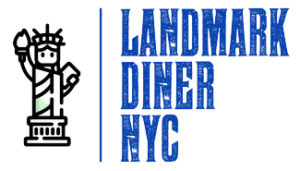The giant kelp forest ecosystem is a large ecosystem of the ocean floor. There are many different types of animals that live in this ecosystem, including fish, sea urchins, crabs, and more.
The kelp forest food web worksheet answer key is an example of a food chain in the giant kelp forest ecosystem. The kelp forest food web worksheet answers questions about how animals and plants interact with each other.
The Food Web of the Kelp Forest Kelp forests are thick kelp-covered regions found near coastal seas. They are the ecosystem’s main producers, giving energy to sea urchins, sea stars, jellyfish, crabs, and snails. Secondary consumers, such as marine otters, keep sea urchin numbers under control.
In light of this, what exactly is a kelp forest ecosystem?
Kelp forests are underwater ecosystems created in shallow water by the dense growth of a variety of kelp species. As a consequence of this tremendous expansion, kelp forests may rapidly establish themselves in previously uninhabited regions. Kelp thrives in nutrient-rich, cold water.
How do people affect kelp forests, for example? Coastal development, sedimentation, pollution, and fishing all have an effect on the health of kelp forests. The food chain may be disrupted by removing predators while fishing.
In the kelp forest ecology, what creatures are both predators and prey?
A food chain may be disrupted by the disappearance of species at higher trophic levels, such as predators. Sea urchins are the main kelp consumers in kelp forests. Urchins are prey for sea otters. Urchins destroy the kelp forest if the sea otter population declines due to illness or poaching.
Kelp belongs to what trophic level?
In kelp forests, sea urchins are important main eaters. Every day, these tiny herbivores consume dozens of kilos (pounds) of gigantic kelp. Herbivores are eaten by secondary consumers. They are at trophic level three.
Answers to Related Questions
What are the benefits of kelp forests?
Large quantities of fish and shellfish rely on kelp forests for food and refuge. Kelp also helps to protect beaches from the effects of wave movement. The sea urchin, which likes kelp, is one of the sea otter’s favorite foods. Sea otters keep sea urchin populations under control when they are present in sufficient numbers.
How many different kinds of kelp are there?
30 species to choose from
What are the benefits of seaweed?
Seaweeds are important components of marine ecosystems. They give nutrients and energy to animals as the first creature in marine food chains, either directly when fronds are eaten or indirectly when decaying portions break down into tiny particles and are consumed by filter-feeding animals.
When it comes to kelp and seaweed, what’s the difference?
Seaweed is a word that may be used to designate a variety of marine-based plant and algae species. Sea kelp, on the other hand, is more specialized. Seaweed comes in a wide variety of sizes, while sea kelp is usually fairly big. Seaweed is divided into three categories: red, brown, and green.
What is the significance of seagrass?
Seagrasses are an essential species for determining the overall health of coastal ecosystems because of their enormous variety and sensitivity to changes in water quality. Seagrasses serve a variety of purposes: The seabed is being stabilized. Other marine creatures get nourishment and have a place to live.
What exactly is Kelping?
Definitions of kelping from a scientific standpoint
Kelps are brown algae of the order Laminariales, with some species reaching lengths of over 61 meters (200 feet). Kelps are collected for food, fertilizer, and sodium and potassium salts, which are utilized in industrial operations (mainly in eastern Asia).
In biology, what is kelp?
Kelps are huge brown algal seaweeds belonging to the Laminariales order. There are about 30 distinct genera to choose from. Kelp is found in “underwater forests” (kelp forests) in shallow seas, and it is believed to have first emerged during the Miocene epoch, about 5 to 23 million years ago.
What is the fundamental structure of a kelp community made up of gigantic kelp?
Giant kelp may grow up to two feet per day under optimum circumstances. Kelp fronds grow straight up to the surface, where they spread over the top of the water to create a thick canopy, held erect by gas-filled bladders at the base of leaflike blades.
Is it true that a sea urchin is an autotroph?
Level of trophic
Sea urchins are herbivores that eat algae, but they may also eat sea cucumbers and a variety of invertebrates including mussels, polychaetes, sponges, brittle stars, and crinoids, making them omnivores that consume a variety of trophic levels.
What kind of plants may be found in a kelp forest?
These creatures eat the holdfasts that keep kelp attached to the ocean’s bottom and the algae that thrive in kelp forests. By chewing away the holdfasts of kelp plants, sea urchins may sometimes totally eliminate them. Sea stars, anemones, crabs, and jellyfish are among the invertebrates found in kelp forests.
Are sea otters considered secondary consumers?
The sea otter is an omnivore that consumes kelp (a kind of seaweed) and sea urchins as a secondary consumer. Small fish are omnivores and main consumers who eat algae and zooplankton.
In the ocean, what consumes seagrass?
Expand/Collapse Seagrasses are eaten by what animals? Florida seagrasses are eaten by sea turtles, manatees, parrotfish, surgeonfish, sea urchins, and pinfish. The epiphytes and invertebrates that dwell on and within seagrass blades provide food for a variety of smaller creatures.
What do sea otters eat?
Killer whales often eat sea otters in the Arctic, while great white sharks kill a large number of otters each year off the California coast. Other predators include sea lions and eagles, who consume otter pups in certain locations. Otters are also preyed upon by coyotes and bobcats on land.
Plankton is eaten by what animals?
Small zooplankton consume phytoplankton, which is then devoured by other zooplankton. Small fish and crabs consume the plankton, which is then eaten by bigger predators, and so on.
What kinds of creatures may be found in kelp forests?
Many diverse species live in kelp forests, including fish, sea urchins, and other marine creatures, as well as invertebrates like snails and sea otters. Kelp forests in Alaska are home to 20 or more species of fish during portion of their lives, drawn to the kelp by the food source.
What is the current population of sea otters?
Today, there are just around 3,000 wild southern sea otters remaining.
What creatures may be found in the kelp forest?
The kelp forest is home to kelp bass, gigantic kelpfish, garibaldi, norris’ top snail, and kelp crabs, among other creatures. The holdfast is a structure that kelp uses to anchor to the rocky bottom. Many other creatures, such as spiny brittlestars and amphipods, live in the holdfast’s cracks.
What factors have an impact on the kelp forest?
The Effects on Kelp Forests Kelp forest habitats are influenced by a variety of natural and human factors. Kelp harvesting, grazing by fish, sea urchins, and crustaceans, plant competition, storms, El Nio occurrences, sedimentation, and pollution are all variables that affect kelp forest stability.
What impact does pollution have on kelp forests?
The researchers discovered that nutrient pollution and increased CO2 had a combined effect on kelp forests, which may have a catastrophic effect on Australia’s coastal ecosystems. They looked at grass algae development, which is a prelude to kelp forest loss. The grass algae is displacing the kelp as it develops.
The giant kelp forest ecosystem is an ecosystem that consists of many different organisms. One food chain that can be found in the giant kelp forest is the one between herbivores and carnivores. A negative consequence of the kelp forest ecosystem falling out of balance would be if there was a decrease in herbivores or increase in carnivores. Reference: what would be a negative consequence of the kelp forest ecosystem falling out of balance?.
Frequently Asked Questions
What is a single food chain in the kelp forest?
A single food chain in the kelp forest is a series of organisms that feed on one another. The main organism is typically algae, which are eaten by small crustaceans.
What is the food web of the kelp forest?
The food web in a kelp forest is complicated. It consists of many different species that interact with one another.
What eats giant kelp?
Giant kelp is a type of seaweed that can grow up to 30 meters. It is eaten by several types of sea creatures and is also used as a food source for humans.
Related Tags
- what is the immediate cause of the decline in the sea otter population?
- primary consumers in kelp forests
- secondary consumers in kelp forests
- decomposers in the kelp forest
- herbivores in kelp forest




